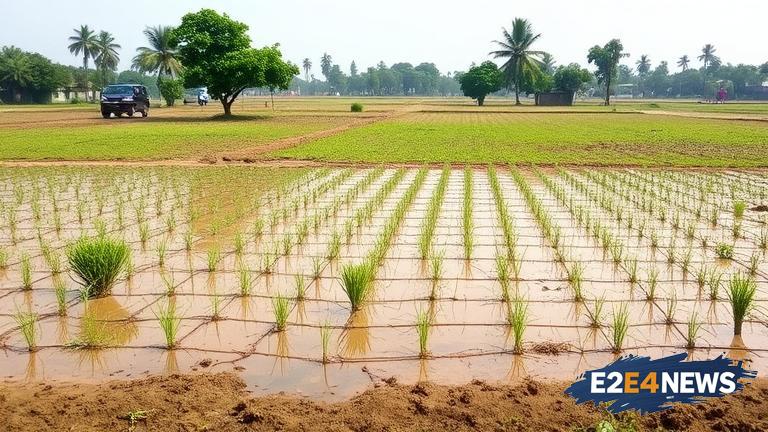Assam, a state in northeastern India, is facing drought-like conditions that have affected the livelihoods of farmers and the overall economy. The region, known for its rich biodiversity and natural resources, is struggling to cope with the changing climate patterns. The drought-like conditions have led to a significant decline in crop yields, impacting the income of farmers who rely heavily on agriculture. The situation has been exacerbated by the lack of rainfall in the region, which has resulted in water scarcity and soil degradation. Experts have warned that the drought-like conditions could have long-term consequences on the environment, including the loss of biodiversity and increased greenhouse gas emissions. The Assam government has been criticized for its inadequate response to the crisis, with many arguing that more needs to be done to support farmers and address the root causes of the problem. The state’s agricultural department has initiated some measures, such as providing seeds and fertilizers to farmers, but more needs to be done to address the scale of the crisis. The drought-like conditions have also highlighted the need for sustainable water management practices, including the use of drip irrigation and mulching. Farmers have been advised to adopt these practices to reduce water waste and improve crop yields. However, the lack of awareness and resources has hindered the adoption of these practices, particularly among small-scale farmers. The situation has also raised concerns about the impact of climate change on agriculture, with many experts warning that the region is likely to experience more frequent and severe droughts in the future. The Assam government has been urged to develop a comprehensive plan to address the crisis, including investing in irrigation infrastructure and providing support to farmers. The plan should also include measures to promote sustainable agriculture practices and reduce the state’s reliance on rain-fed agriculture. The drought-like conditions have also had a significant impact on the state’s economy, with the agricultural sector being a major contributor to the state’s GDP. The decline in crop yields has resulted in a significant loss of revenue, which could have long-term consequences for the state’s economy. The situation has also raised concerns about food security, with many families relying on agriculture for their livelihoods. The Assam government has been urged to provide support to families affected by the drought-like conditions, including providing food assistance and other forms of aid. The situation has also highlighted the need for greater investment in agricultural research and development, including the development of drought-resistant crop varieties. The use of technology, such as drones and satellite imaging, could also help farmers to better manage their crops and reduce water waste. The drought-like conditions in Assam have also raised concerns about the impact of climate change on the region’s biodiversity. The state is home to a number of endangered species, including the one-horned rhinoceros and the Bengal tiger. The changing climate patterns could have a significant impact on the habitats of these species, highlighting the need for conservation efforts. The Assam government has been urged to take immediate action to address the crisis, including investing in conservation efforts and promoting sustainable agriculture practices. The situation has also raised concerns about the need for greater awareness and education about the impacts of climate change. Many farmers and communities are not aware of the risks associated with climate change, highlighting the need for greater awareness and education efforts. The Assam government has been urged to launch a public awareness campaign to educate farmers and communities about the impacts of climate change and the need for sustainable agriculture practices.
